Written by Shreya Kejriwal, the Founder and Editor-in-Chief at WanderSmartly.com. She has visited over 25 countries and has a passion for traveling to Turkey.
Please allow me to help you plan your Turkey Trip. I have been many times.
Below, you will find the ultimate guide on how to spend 2 weeks in Türkiye. This 14 day Turkey itinerary covers historical sites, the outdoors, food stops & more.
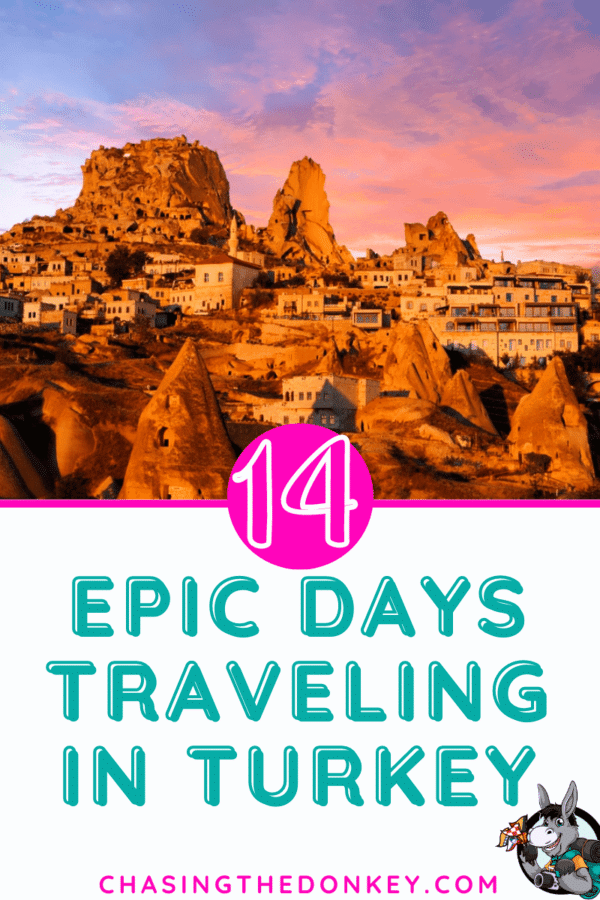
Turkey is among the best travel destinations in the world. When planning your trip to Turkey, keep in mind that Turkey is located in both Asia and Europe, giving it a mix of elements from both worlds to charm you.
The mosques in Istanbul tell tales of the country’s rich history and the remains of the ancient cities of Hierapolis and Ephesus to transport you centuries back in time like a time traveler.
The whimsical fairy chimneys of Cappadocia mesmerize you, and the quintessential Turkish Coffee takes your tastebuds for a joyride.
So, if you’ve selected Turkey as your destination, congratulations on a well-made decision!
Skip Ahead To My Advice Here!
Places We’ll Visit On This 2 Week Turkey Itinerary
This 14 days in Turkey itinerary guide will cover these places;
- Istanbul – one of the most cosmopolitan cities in Turkey
- Hierapolis-Pamukkale
- Ephesus
- Cappadocia
- Antalya
14 day trip made for you!
- 🏰 Istanbul, Izmir, Bodrum, Fethiye, Antalya, Konya, Cappadocia – The Ultimate Turkish Adventure
- 🏖️ Istanbul, Izmir, Antalya, Konya, Cappadocia – A Brief Best of Turkey
Day 1 To 4 Travel In Turkey: Istanbul Itinerary
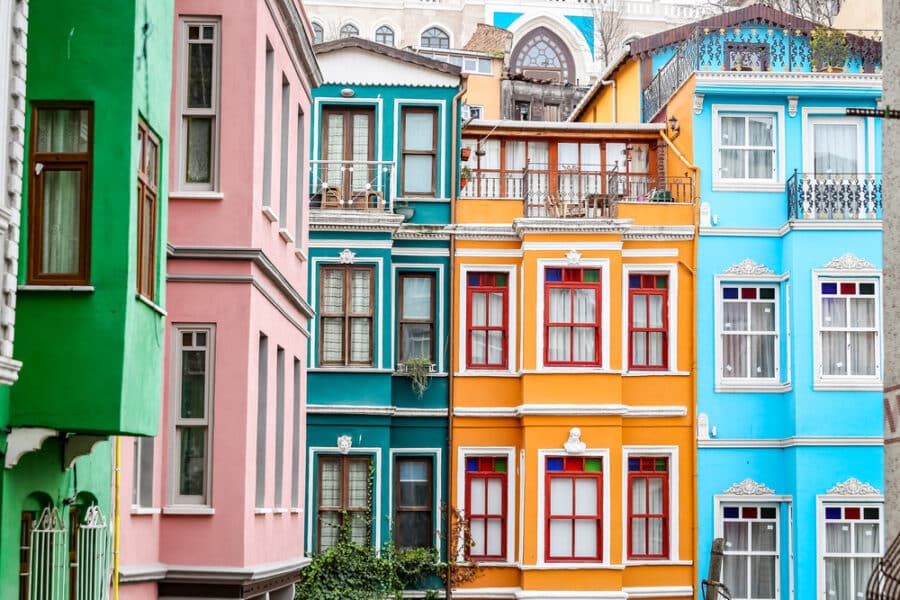
Your Turkey trip is best begun by exploring one of its major cities, Istanbul. Istanbul is a city in Turkey with a long and complex history. It has been inhabited since at least the 7th millennium BC, and Several different empires and civilizations have ruled the Turkish people over the centuries.
First known as Constantinople, it was the capital of the Byzantine Empire founded by the Greeks, which later fell to the Ottoman Turks, and the city was renamed Istanbul. Over the years, the city has undergone massive transformations to become one of the world’s largest and most vibrant cities today.
I’d highly recommend spending 3 to 4 days in the vibrant city of Istanbul to soak in its culture, rewind to the past, and delve into its history. Stay in the old part of town, near Sultanahmet, the historic heart of the city.
The must-visit sites – Hagia Sophia Grand Mosque, Blue Mosque, Topkapi Palace, Grand Bazaar, and the Spice Bazaar – are within walking distance. The Hagia Sophia fascinated me the most, with elements of Christianity and Islam existing simultaneously. Your first full day in the city should be spent visiting these historical sites.
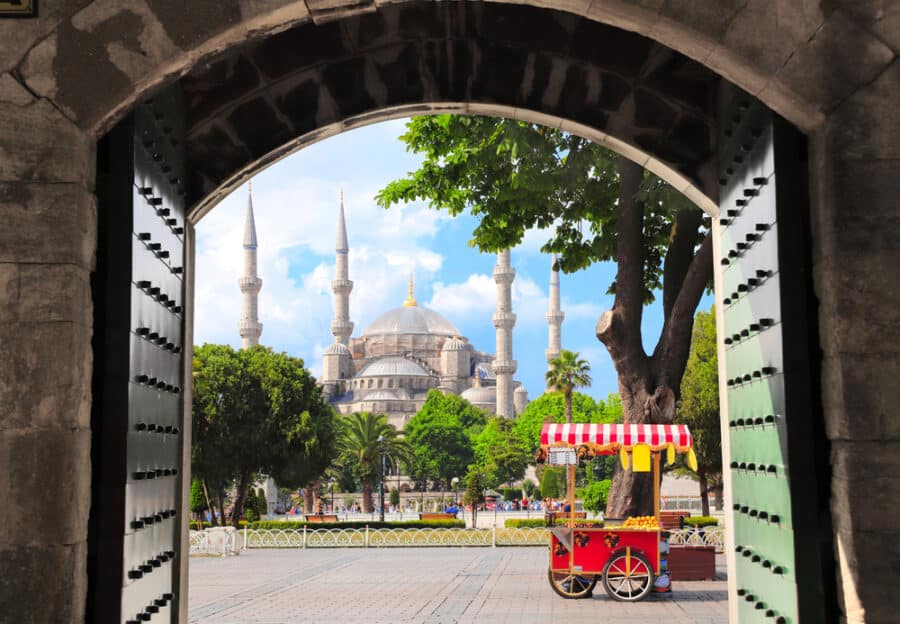
Istiklal Street in Istanbul is among the most famous streets in the city. Bustling with cafes, restaurants, shops, and live music, it shows the vibrant and modern part of the city. For the next day, spend at least half the day strolling on the main street and checking out Taksim Square, another historical place in Istanbul.
One of my favorite experiences in Istanbul is watching the whirling dervishes show.
It is a meditation practice performed by Sufi groups using dance and music as their offering to God. The group performing on stage had their eyes closed, and despite that, they were in perfect sync with each other. This is a one-hour show which can be watched in the evening.
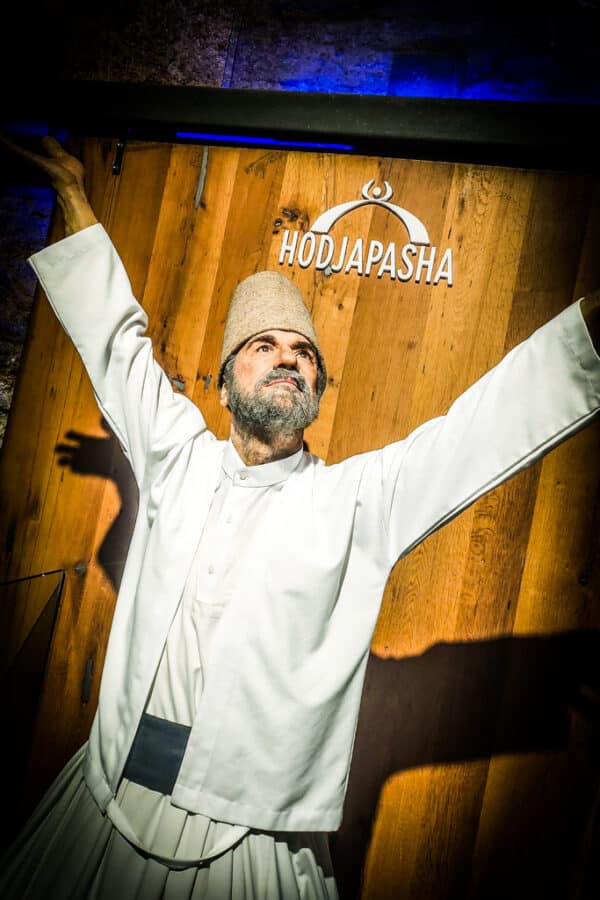
Begin the next day with a visit to the 17th-century Spice Bazaar, one of Istanbul’s most colorful, bustling main attractions.
Next, travel the Golden Horn on your way to an unforgettable cruise along the Bosphorus Strait, the majestic strait that runs through Istanbul, linking Europe and Asia. From the cruise boat, you can view the dramatic sights lining the Bosphorus’ wooded shores: mosques, a bridge that for a time was the world’s longest, and Rumeli Hisari, a massive fortress built by Mehmet the Conqueror in just three months as he prepared to take Istanbul.
Part of what you can see in Turkey on this tour are the 19th-century mansions of the Ottoman elite and the Sultans’ fanciful gingerbread palaces and hunting lodges.
Do not leave Istanbul without experiencing the Hammam – a Turkish body scrubbing, washing, and massage experience. For the best Hammam experience, go to the Haseki Hurrem Sultan Hammam, which dates back to the 16th century. It’s located in the middle of the Blue Mosque and the Hagia Sophia Mosque.
It is far too hard to list exactly what to do in Istanbul for a few days, as there is so much on offer. So, take your pick from the ideas below. These Istanbul guides will ensure your few days in this metropolis are a total blast.
- Exploring Istanbul With Kids
- Istanbul Beaches
- Here Is How Many Days In Istanbul Is Enough
- Where To Eat In Istanbul – Turkey Travel Guide
- Best Hammam In Istanbul
- 4 Days In Istanbul Itinerary
- 16 Things To Do In Istanbul, Turkey
- Whirling Dervishes In Istanbul
- Your Guide To Sultanahmet Istanbul
- Top Palaces In Istanbul
- 48 Hours In Istanbul
- Is Istanbul Safe
- 18 Best Mosques In Istanbul
- Istanbul Nightlife
- Shopping In Istanbul
- Where To Stay In Istanbul
- Best Hotels In Taksim Square In Istanbul
- The Best Festivals in Istanbul
- 1 Day In The Colorful Balat Istanbul
- Best Museums In Istanbul
- Top Hotels Near The Blue Mosque
- 5 Biggest Istanbul Tourist Scams To Avoid
- Best Breakfast In Istanbul Travel Guide
- Romantic Places In Istanbul
- Things To Do In Istanbul In Winter
Day 5: Day 5 Fly To Izmir, Stay 1 Night In Kusadasi
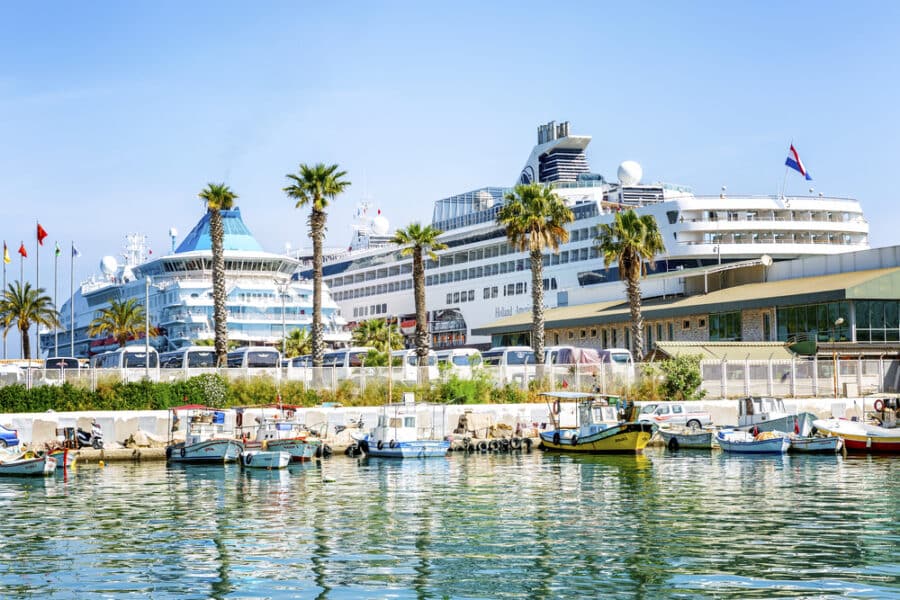
The next destination in Turkey covers the pool terraces of Pamukkale and the ancient city of Ephesus.
Take a domestic flight to Izmir with Turkish Airlines or Pegasus (low-cost carrier) and stay overnight in Kusadasi, which is the perfect base. Kusadasi is a coastal town on the Western coast of Turkey. You can enjoy a walk along its seafront promenade as soon as you arrive.
Editors Note: Domestic flights in Turkey are exceptionally well organized and efficient. Do not be afraid to travel long distances by plane. To get the most out of your 2-week Turkey itinerary, flights are recommended. I promise that you will save a lot of travel time when you do.
Day 6: Pamukkale Hot Springs & Ancient Tour Of Turkey
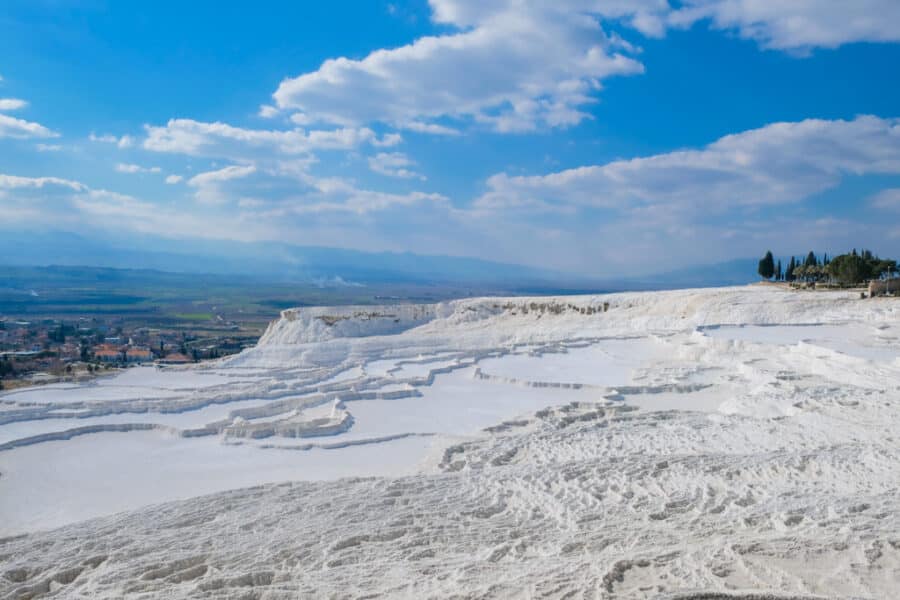
From Kusadasi, rent a car and drive around 2.5 hours inland to Pamukkale.
Plan your trip so you leave early to enjoy the spas, pools, and terraces of this natural wonder called the ‘Cotton Castle.’ This name is truly fitting; the brilliant white calcified terraces resemble a cotton castle. Also, spend extra time in Hieropolis, one of the world’s largest and most diverse necropolises.
Of all the things to do in Turkey, this was in my top 5 best experiences!
Editors Note: A road trip around Turkey is effortless; the roads are in excellent condition, and the tolls are minimal, making it very easy to travel around on four wheels.
Day 7 Of Your 2 Week Itinerary: Ephesus Tour; Fly To Cappadocia
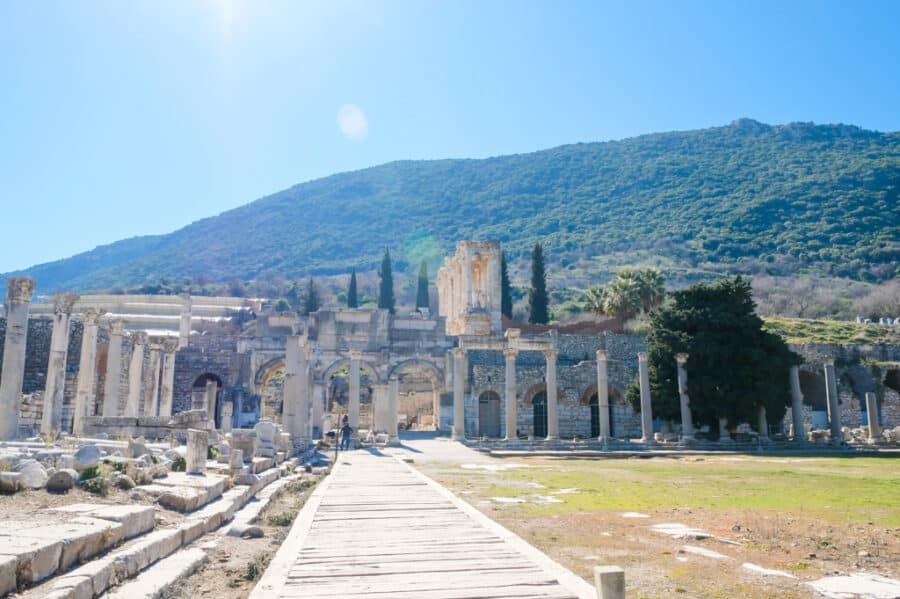
Begin the Ephesus tour with a visit to The Temple of Artemis, one of the Seven Wonders of the Ancient World. Today, one can only see the ruins of the foundations, entirely made of marble and full of sculptured columns’ capitals and shafts.
Next, visit the archaeological site of the ancient Greco-Roman City of Ephesus. Enter Ephesus through the Magnesia Gate and begin a slow, downhill walk into the ruins of this Roman provincial capital.
Go past the Odeon Theater, the Celsius Library, the Temple of Hadrian, the Fountain of Trajan, and the Great Theater. The theater seats 24,000 spectators and is still used for local festivals and concerts.
Visit The House of the Virgin Mary, which is considered a holy place for both Christians and Muslims alike. This is the official site recognized by the Vatican as the residence where the Virgin Mary spent her final days. Experience a tranquil atmosphere for prayer and meditation.
Take a late evening flight to Cappadocia – one of the best places in Turkey to wake up. You will see what I mean tomorrow.
Day 8 To Day 10: 2 Nights Cappadocia Itinerary
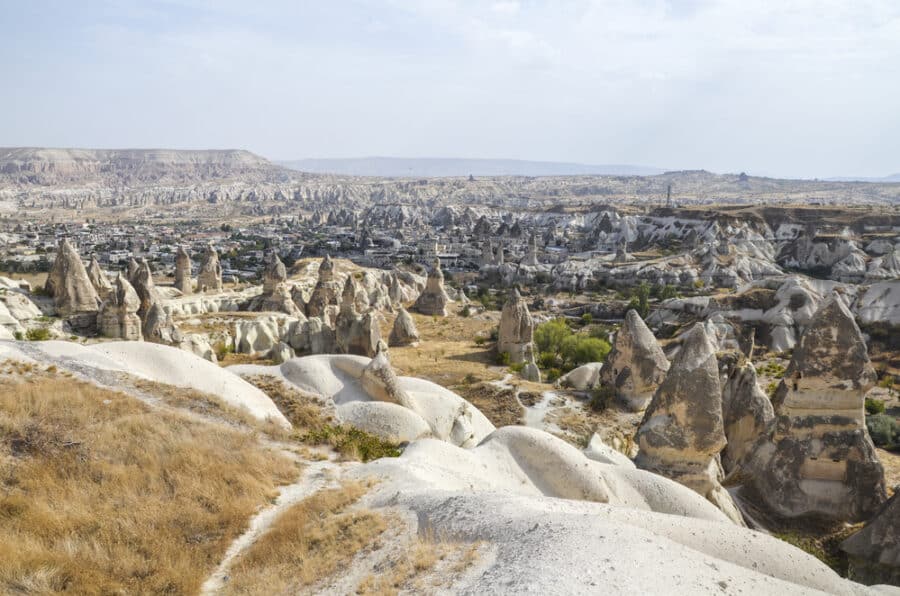
Flying in the hot air balloons in Cappadocia will surely tick off a bucket list item that you will remember for years to come! The weather, though, can be notorious, so as far as possible, plan your stay in Cappadocia on days with good weather predictions.
I, unfortunately, couldn’t catch the hot air balloon ride owing to snowfall, but I don’t think for a minute that my Cappadocian adventure was ruined. Cappadocia is a beautifully unique place on earth, with its whimsical fairy chimneys waiting to charm you.
Make sure you stay in one of the cave hotels in Cappadocia. Visit the Göreme open-air museum. Visit Devrent Valley, Pasabagi, and Avanos for the rest of the day. This completes the Northern region of Cappadocia.
There’s more. The Southern region of Cappadocia has a lot to mesmerize you, too. Trek along the beautiful Rose Valley and visit Kaymakli (or Ozkonak) Underground City, where early Christians lived in fear and faith. On the way back, make sure you visit the panoramic Pigeon Valley, where pigeons contributed to the lives of locals with their manure to fertilize the vineyards.
Day 11: Drive To Antalya Day
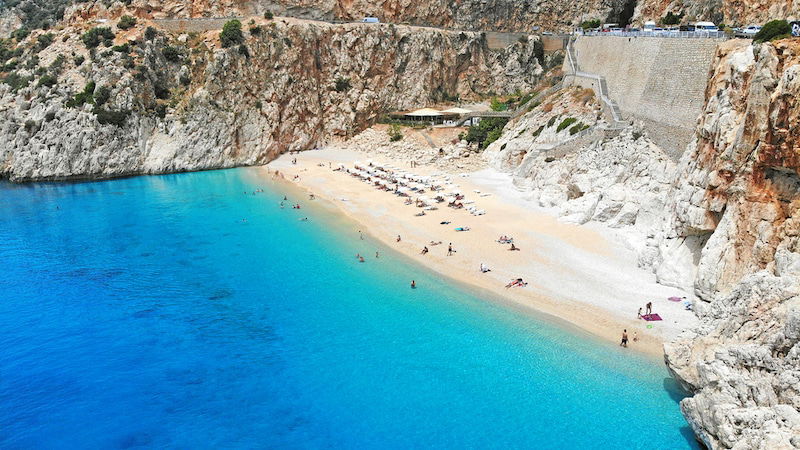
Direct flights from Cappadocia aren’t always available, so consider driving to Antalya. This is a seven-hour drive and would almost take up your entire day.
Day 12 to 13: Explore Antalya

The best way to end your trip would be to relax for two full days in Antalya, which is famous for its Mediterranean coast and archaeological sites from the Greek and Roman eras. The region is blessed with stunning natural beauty, including beautiful beaches, crystal-clear waters, and magnificent mountains.
The city of Antalya itself is home to many historical landmarks, including Hadrian’s Gate, the Yivli Minaret, and the Antalya Museum, which houses artifacts from ancient civilizations.
Plan to visit the Duden Waterfall and have a great time in the old town of Antalya. You may visit the ruins of Aspendos nearby or go rafting at Koprulu Canyon National Park if you’re feeling adventurous. The Taurus Mountains, which run along the Turkish Riviera, are a popular destination for hiking and mountain biking. Relax at the beautiful Antalyan Beaches – Konyaalti or Lara – whichever is closer.
Day 14: Depart Back Home
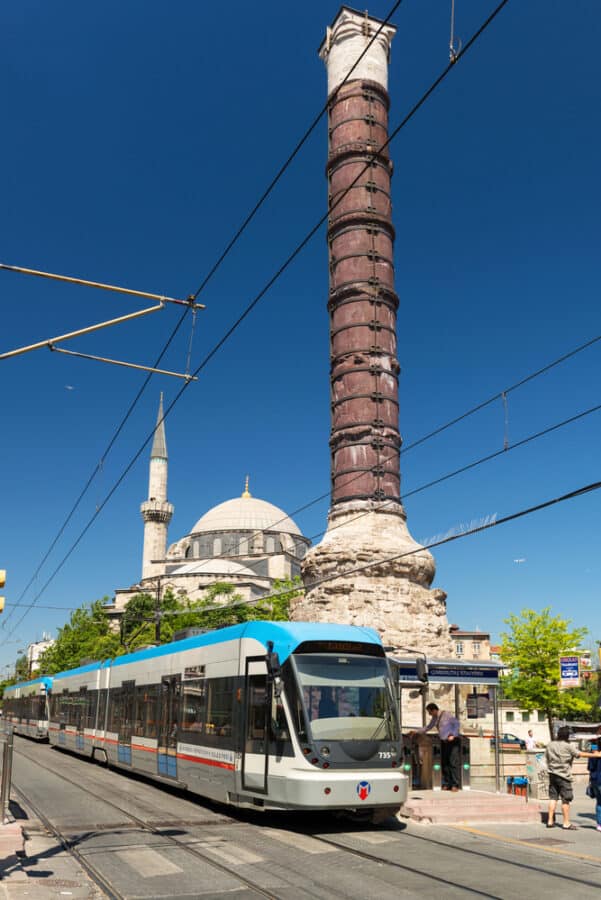
Depending on your flight home, you might have enough time in Istanbul to keep exploring, or perhaps you’ll head to Greece. We totally recommend that option.
14 days around Turkey tours made for you!
- 🏰 Istanbul, Izmir, Bodrum, Fethiye, Antalya, Konya, Cappadocia – The Ultimate Turkish Adventure
- 🏖️ Istanbul, Izmir, Antalya, Konya, Cappadocia – A Brief Best of Turkey
Brands We Use And Trust
History Of Turkey

Before we get started on your Turkey 2-week itinerary guide, let’s chat about the history. Turkey has a long and fascinating history that spans thousands of years. In ancient times, the region was home to powerful civilizations such as the Hittites, Greeks, and Romans, who left a lasting legacy through impressive architectural ruins and cultural artifacts. In the 14th century, the Ottoman Turks rose to power and established a vast empire that lasted for centuries, spanning across Europe, Asia, and Africa. However, by the early 20th century, the Ottoman Empire was in decline.
After World War I, Turkey became a republic under the leadership of Mustafa Kemal Atatürk and formed a secular, democratic government. Today, Turkey is one of the most popular modern nations with a rich cultural heritage and a diverse population, and it plays a vital role in global politics and economics.
Here are a few questions you may have about spending two weeks in Turkey;
What is the currency in Turkey?
The currency in Turkey is the Turkish Lira. ATMs are widely available in major cities and tourist areas. Withdraw Liras from your debit/travel cards.
Do I need a visa for Turkey?
You need a visa and a passport with an expiration date of at least 180 days beyond the duration of your stay. Check out the guidelines here.
What language do they speak in Turkey?
Turkish is the most widely spoken language in Turkey. English is not widely spoken; download the Turkish language on Google Translate for easy communication.
What is the best time to visit Turkey?
Turkey can be visited at any time of the year. I visited Turkey in the month of December, which is not a conventional time to visit, though I had a lovely experience. Plan at your convenience, though, if you can, then avoid heavy crowds from June to August.
Editors note: The best months to visit Turkey are April, May, September, and October. During these months, the weather is generally pleasant, and there are fewer crowds compared to the peak summer season.
What is a suggested 2-week itinerary for traveling in Turkey?
We recommend starting your trip in Istanbul and then visiting Cappadocia, Antalya, Fethiye, Pamukkale, Kuşadası, and Ephesus.
How much time should I spend in Turkey?
A 2-week trip is ideal to see the major highlights of Turkey and experience its diverse attractions and destinations.
What are some must-visit places in Turkey?
During your 2-week itinerary, make sure to visit Istanbul, Cappadocia, Pamukkale, Ephesus, Troy, and Gallipoli, as they are some of Turkey’s most significant archaeological and historical sites.
What are some activities I can do in Turkey?
You can enjoy various activities in Turkey, such as taking a hot air balloon ride in Cappadocia, going on a boat tour in Fethiye, exploring Istanbul’s cosmopolitan neighborhoods, hiking in scenic landscapes, and visiting multiple UNESCO World Heritage sites.
How can I book online for activities and accommodations in Turkey?
There are several online platforms where you can book activities and accommodations for your trip to Turkey. Some popular options include Booking.com and GetYourGuide.
Is it safe to travel in Turkey?
Turkey is generally a safe country to travel in. However, it’s always a good idea to stay informed about the current situation and follow any travel advisories issued by your home country’s government.
What are some suggested places to visit in Ankara?
In Ankara, you can explore the city center, visit the Ataturk Mausoleum, explore the Museum of Anatolian Civilizations, and wander around the old town of Ulus. It is recommended to stay near the city center for easy access to these attractions.
How do I travel from Ankara to Istanbul?
There are several transportation options available, including taking a flight, a train, a bus, or driving by car. Choose the option that suits your preferences and budget.
What can I do in Istanbul on the final day of my trip?
On your final day in Istanbul, you can visit any remaining attractions on your list, go souvenir shopping in the Grand Bazaar or Spice Bazaar, and indulge in delicious local cuisine before your departure.
What food to eat in Turkey?
Turkey is known for its delicious and diverse cuisine, influenced by its history and cultural heritage. Some traditional Turkish foods you MUST try when visiting:
- Kebabs: A must-try when you plan your trip to Turkey. Turkish kebabs are a must-try when you plan your trip to Turkey. You can find different types, such as shish kebab (grilled meat on a skewer), Adana kebab (spicy minced meat), and doner kebab (slow-cooked meat on a rotating spit)
- Baklava: this sweet pastry is made with layers of phyllo dough, nuts, and syrup or honey. It’s often served with a cup of Turkish tea or coffee. I strongly suggest you pick some up to share with your friends and family back home!
- Turkish Delight: this soft, chewy candy is made with sugar, starch, and flavorings like rosewater or pistachios. It comes in different colors and flavors and is a popular souvenir to take home
- Turkish Coffee: Turkish coffee is a traditional way of preparing coffee using finely ground coffee beans brewed with very little water, resulting in a concentrated coffee with a thick and frothy layer on top. I never enjoyed black coffee until I tried Turkish Coffee when I landed in Istanbul. To date, it remains the best coffee I’ve sipped in my life
- Apple Tea: even if you’re not an avid tea drinker, I recommend you sip the hot apple tea in the traditional pear-shaped tea cups. It’s an experience in itself!
Turkey has so much to offer to a traveler. The history, the culture, the architecture, the food, fairy chimneys, ancient cities, and the ocean. The list seems endless. It is a gem of a destination and a place to visit in Turkey during your lifetime. It is a trip I hold very dearly in my heart, and I am sure you will, too.
Now that you have your 2 weeks in Turkey guide, tell us, how many days will you travel in Turkey?

